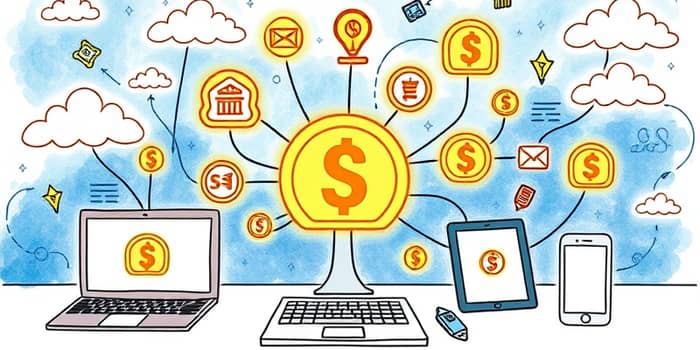In today’s digital economy, entrepreneurs and creators are constantly seeking reliable income streams that can sustain growth and fuel innovation. Developing digital products with built-in recurring revenue models unlocks the potential for predictable monthly revenue streams while offering value that keeps customers coming back for more.
Understanding Recurring Revenue Models
A recurring revenue model is a strategy where customers pay at regular intervals—monthly, quarterly, or annually—for ongoing access to products or services. Unlike one-time purchases, this approach builds a stable financial foundation and deepens customer relationships.
Key benefits include:
- Subscription Model: Fixed fees grant access to software, content, or services on a scheduled basis, as seen in SaaS platforms.
- Usage-Based Model: Charges are tied to consumption metrics, ideal for cloud storage, API calls, or bandwidth.
- Membership Programs: Exclusive content, community access, or premium services for members who pay recurring fees.
By adopting a consistent and compelling value philosophy, businesses can justify ongoing payments and foster long-term loyalty.
Selecting the Right Digital Products
Not every digital creation suits a subscription or membership format. The most successful offerings solve a recurring need, evolve over time, and encourage continued engagement.
Popular categories include:
- Software and Plug-ins: Tools that automate tasks, improve workflow, or enhance creativity often thrive under SaaS models.
- Online Courses and Tutorials: Educational content that grows with updates, new modules, or community Q&A sessions.
- Entertainment and Media: Music libraries, video streaming, and digital art galleries benefit from recurring access fees.
- Digital Publications: News outlets, specialized journals, and niche blogs that release regular issues or analyses.
Choosing a product type depends on your expertise, audience demand, and the capacity to deliver fresh content or improvements.
Key Strategies and Tools for Implementation
Implementing a recurring revenue model requires both strategic planning and the right technical infrastructure. Focus on delivering seamless experiences that make renewals effortless.
Essential strategies include:
- Customer Retention and Engagement: Use feedback loops, in-app messaging, and community forums to keep subscribers invested and reducing churn and boosting customer loyalty.
- Scalable Architecture: Build on cloud platforms to handle growth without compromising performance or user experience.
- Tiered Pricing Structures: Offer entry, standard, and premium plans to cater to diverse needs and budgets.
- Automated Billing and Analytics: Integrate subscription management systems to automate recurring payments seamlessly for your customers and gain insights on usage patterns.
Popular tools that power these strategies include Stripe and Chargebee for payment processing, Intercom for user engagement, and Mixpanel or Google Analytics for tracking retention metrics.
Industries and Case Examples
Recurring revenue models have transformed multiple sectors. Below is an overview of leading industries and real-world examples that illustrate best practices.
Overcoming Challenges and Future Outlook
While the prospects are exciting, businesses must navigate several obstacles when launching recurring revenue products. Significant upfront investments in development, content creation, and marketing often precede any return on investment. Moreover, pricing must accurately reflect evolving value to avoid subscriber dissatisfaction and cancellations.
To overcome these challenges:
- Conduct market research and pilot programs to validate pricing tiers and feature sets before full launch.
- Establish clear metrics—such as monthly recurring revenue (MRR), churn rate, and customer lifetime value (CLV)—to monitor progress and inform adjustments.
- Invest in continuous improvement by releasing new features, hosting webinars, or adding community events to sustain excitement.
Looking ahead, the recurring revenue model is set to expand into emerging fields like virtual reality experiences, AI-driven personal assistants, and personalized wellness subscriptions. Organizations that master ongoing customer value will be best positioned to lead in this dynamic landscape.
By embracing recurring revenue strategies, creators and entrepreneurs can build resilient businesses that reward both makers and subscribers. The journey demands dedication to quality, a deep understanding of customer needs, and the agility to evolve. When executed thoughtfully, consistent and compelling value transforms one-time buyers into lifetime advocates.
References
- https://stripe.com/resources/more/recurring-revenue-models-explained
- https://www.digitalroute.com/blog/recurring-revenue/
- https://www.disco.co/blog/9-recurring-revenue-businesses-models-2024
- https://quaderno.io/blog/recurring-revenue-model-right-digital-business/
- https://www.chargebee.com/resources/glossaries/what-are-recurring-revenue-models/
- https://spp.co/blog/recurring-business-ideas/
- https://www.shopify.com/blog/digital-products
- https://teachable.com/blog/recurring-revenue-models










